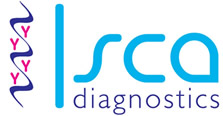Human Mycoses
Research-Grade Monoclonal Antibodies for Human Mycoses – Dispatched Worldwide in 2-5 Days
Order research-grade monoclonal antibodies confidently from just £95 per vial, and have them delivered rapidly to your laboratory via DHL Express within 1–5 business days worldwide.
Each antibody clone is available in two practical pack sizes (25 µL and 100 µL) and is supplied complete with a comprehensive certificate of analysis, ensuring you receive consistently reliable, high-quality products for your critical research.
Easy and Secure Ordering
Complete your purchase quickly and securely online using all major credit/debit cards or PayPal. Purchase orders are readily accepted, and for an even quicker checkout experience, utilise our Scan.Pay.Go QR-coded PayPal option.
Bulk Orders and OEM Solutions
Require larger quantities or customised OEM branding for your research or manufacturing needs? ISCA Diagnostics offers scaled production tailored precisely to your requirements. Take advantage of bulk-volume discounts and flexible white-label packaging solutions designed specifically for OEM clients.
Simply email info@iscadiagnostics.com today for a swift same-day response detailing pricing, availability, and customisation options.
For more information about our Monoclonal Antibodies for Human Mycoses please click here.
-
Alternaria, monoclonal antibody [clone PC3]
£0.00 -
Apophysomyces, mouse monoclonal antibody [clone JD4]
£0.00 -
Aspergillus and Penicillium, monoclonal antibody [clone ED1]
£0.00 -
Aspergillus and Penicillium, monoclonal antibody [clone EF9]
£0.00 -
Aspergillus and Penicillium, monoclonal antibody [clone JF5]
£0.00 -
Aspergillus and Penicillium, monoclonal antibody [clone ND12]
£0.00 -
Candida, mouse monoclonal antibody [clone MC3]
£0.00 -
Cladosporium, monoclonal antibody [clone CH1]
£0.00 -
Fusarium, monoclonal antibody [clone ED7]
£0.00 -
Geotrichum, mouse monoclonal antibody [clone FE10]
£0.00 -
Lomentospora prolificans, monoclonal antibody [clone CA4]
£0.00 -
Mucorales, mouse monoclonal antibody [clone TG11]
£0.00
Selected images courtesy of Y. E. Amatnieks (Fun with Microbiology).

![Alternaria, monoclonal antibody [clone PC3]](https://www.iscadiagnostics.com/media/catalog/product/cache/1/small_image/295x295/9df78eab33525d08d6e5fb8d27136e95/i/m/image_7_1.jpg)
![Apophysomyces, mouse monoclonal antibody [clone JD4]](https://www.iscadiagnostics.com/media/catalog/product/cache/1/small_image/295x295/9df78eab33525d08d6e5fb8d27136e95/m/u/mucorales01.jpeg)
![Aspergillus and Penicillium, monoclonal antibody [clone ED1]](https://www.iscadiagnostics.com/media/catalog/product/cache/1/small_image/295x295/9df78eab33525d08d6e5fb8d27136e95/i/m/image_1_2.jpg)
![Aspergillus and Penicillium, monoclonal antibody [clone EF9]](https://www.iscadiagnostics.com/media/catalog/product/cache/1/small_image/295x295/9df78eab33525d08d6e5fb8d27136e95/i/m/image_1_3.jpg)
![Aspergillus and Penicillium, monoclonal antibody [clone JF5]](https://www.iscadiagnostics.com/media/catalog/product/cache/1/small_image/295x295/9df78eab33525d08d6e5fb8d27136e95/i/m/image_1.jpg)
![Aspergillus and Penicillium, monoclonal antibody [clone ND12]](https://www.iscadiagnostics.com/media/catalog/product/cache/1/small_image/295x295/9df78eab33525d08d6e5fb8d27136e95/i/m/image_1_1.jpg)
![Candida, mouse monoclonal antibody [clone MC3]](https://www.iscadiagnostics.com/media/catalog/product/cache/1/small_image/295x295/9df78eab33525d08d6e5fb8d27136e95/c/a/candida_albicans.jpg)
![Cladosporium, monoclonal antibody [clone CH1]](https://www.iscadiagnostics.com/media/catalog/product/cache/1/small_image/295x295/9df78eab33525d08d6e5fb8d27136e95/i/m/image_8_1.jpg)
![Fusarium, monoclonal antibody [clone ED7]](https://www.iscadiagnostics.com/media/catalog/product/cache/1/small_image/295x295/9df78eab33525d08d6e5fb8d27136e95/i/m/image_2_1.jpg)
![Geotrichum, mouse monoclonal antibody [clone FE10]](https://www.iscadiagnostics.com/media/catalog/product/cache/1/small_image/295x295/9df78eab33525d08d6e5fb8d27136e95/g/e/geotrichum_species.jpeg)
![Lomentospora prolificans, monoclonal antibody [clone CA4]](https://www.iscadiagnostics.com/media/catalog/product/cache/1/small_image/295x295/9df78eab33525d08d6e5fb8d27136e95/i/m/image_4_1.jpg)
![Mucorales, mouse monoclonal antibody [clone TG11]](https://www.iscadiagnostics.com/media/catalog/product/cache/1/small_image/295x295/9df78eab33525d08d6e5fb8d27136e95/r/h/rhizopus_arrhizus_1.jpeg)
